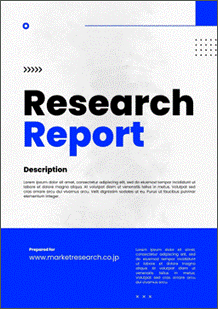 | • レポートコード:D0-MOR-AP0595 • 出版社/出版日:Mordor Intelligence / 2020年4月20日 • レポート形態:英文、PDF、100ページ • 納品方法:Eメール(受注後2-3営業日) • 産業分類:消費財及びサービス |
| Single User | ¥629,000 (USD4,250) | ▷ お問い合わせ |
| Team User | ¥703,000 (USD4,750) | ▷ お問い合わせ |
| Corporate License | ¥1,110,000 (USD7,500) | ▷ お問い合わせ |
• お支払方法:銀行振込(納品後、ご請求書送付)
レポート概要
| 本調査レポートは、プロバイオティック化粧品の世界市場について調査・分析した資料で、プロバイオティック化粧品の市場概要、動向、セグメント別市場規模、地域別分析、競争状況、企業情報、市場機会分析などで構成されています。 |
Global probiotic cosmetic products market is forecasted to grow at a CAGR of ~7.2% during the forecast period (2020-2025).
– The rise in popularity of probiotics as a main functional ingredient which is efficient against various skin concerns such as acne, wrinkle, blemishes etc., is anticipated to drive the market growth during the study period.
– Furthermore, rise in demand for natural cosmetics among various consumer groups, particularly millennials supported by growing awareness about their clinical evidences and efficacy has also added to the growth of the market.
– Additionally, factors such as growing about personal appearance, skin, hair, health, and wellness coupled with demand for Multi-functional beauty products which allows consumers to extract maximum value by spending on a single product are the key trends driving probiotic cosmetic products market in the coming years.
Key Market Trends
Hair Cosmetics is Anticipated to Grow at a Significant Rate
Owning to high concern for hair care, there is an increase in demand for specialised solutions which include probiotic hair care products. Not only the younger and dynamic population, but the older individuals are also interested in buying products, like hair dyes, hair growth oils, and serums owing to different hair and scalp related problems. Additionally, consumers across the globe are continuously seeking for hair care products with pure organics such as probiotics. However, product innovation in the hair care segment is anticipated to drive the market growth in the coming years. For instance, in 2019, Tela Beauty Organics by Philip Pelusi launched Probiotic Scalp Scrub, a new addition to Tela Life Force Collection for healtyh hair.
North America Holds Significant Share in the Market
North America has witnessed an increase in the percentage of population inclined towards healthier lifestyles supported by rise in demand for products which have a low impact on the environment are the major factors driving the market growth in the region. Furthermore, growing acceptance of probiotic products including cosmetics especially among millennial is likely to contribute the growth of the market in the coming years. Furthermore, awareness about the harmful effects of chemicals and synthetic products are few factors enhancing the growth of the market.The United States holds the major share in the North America probiotic cosmetic products market.
Competitive Landscape
The global probiotic cosmetics market is highly competitive with the presence of various regional and global players. Companies are investing on expanding their product offerings, improving functionality, and marketing activities. Key players in the market include ESSE SKINCARE, L’OREAL S.A., Unilever PLC, Estée Lauder Inc, Aurelia Skincare Ltd., among others.
Reasons to Purchase this report:
– The market estimate (ME) sheet in Excel format
– Report customization as per the client’s requirements
– 3 months of analyst support
1 INTRODUCTION
1.1 Study Assumptions and Market Definition
1.2 Scope of the Study
2 RESEARCH METHODOLOGY
3 EXECUTIVE SUMMARY
3.1 Market Overview
4 MARKET DYNAMICS
4.1 Market Drivers
4.2 Market Restraints
4.3 Porter’s Five Forces Analysis
4.3.1 Threat of New Entrants
4.3.2 Bargaining Power of Buyers/Consumers
4.3.3 Bargaining Power of Suppliers
4.3.4 Threat of Substitute Products
4.3.5 Intensity of Competitive Rivalry
5 MARKET SEGMENTATION
5.1 By Product Type
5.1.1 Skin Care
5.1.2 Hair Care
5.1.3 Other Product Types
5.2 By Distribution Channel
5.2.1 Speciality Stores
5.2.2 Supermarkets/Hypermarkets
5.2.3 Convenience Stores
5.2.4 Online Retail
5.2.5 Other Distribution Channels
5.3 Geography
5.3.1 North America
5.3.1.1 United States
5.3.1.2 Canada
5.3.1.3 Mexico
5.3.1.4 Rest of North America
5.3.2 Europe
5.3.2.1 Spain
5.3.2.2 United Kingdom
5.3.2.3 Germany
5.3.2.4 France
5.3.2.5 Italy
5.3.2.6 Russia
5.3.2.7 Rest of Europe
5.3.3 Asia Pacific
5.3.3.1 China
5.3.3.2 Japan
5.3.3.3 India
5.3.3.4 Australia
5.3.3.5 Rest of Asia-Pacific
5.3.4 South America
5.3.4.1 Brazil
5.3.4.2 Argentina
5.3.4.3 Rest of South America
5.3.5 Middle East and Africa
5.3.5.1 South Africa
5.3.5.2 Saudi Arabia
5.3.5.3 Rest of Middle East and Africa
6 COMPETITIVE LANDSCAPE
6.1 Most Active Companies
6.2 Most Adopted Strategies
6.3 Market Share Analysis
6.4 Company Profiles
6.4.1 ESSE SKINCARE
6.4.2 LOREAL S.A.
6.4.3 Unilever PLC
6.4.4 Estee Lauder Inc
6.4.5 Aurelia Skincare Ltd.
6.4.6 EMINENCE ORGANIC SKIN CARE
6.4.7 Tula Life, Inc.
6.4.8 LaFlore Probiotic Skincare
7 MARKET OPPORTUNITIES AND FUTURE TRENDS